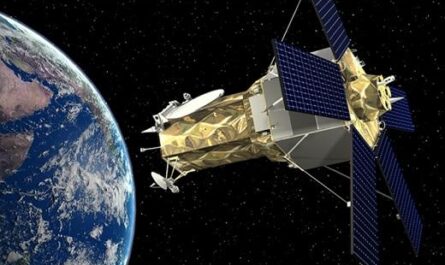What is Sensor Fusion?
Sensor fusion refers to the process of combining sensory data or data derived from disparate sources such that the resulting information is in some sense better than would be possible when these sources were used individually. The goal is to understand the environment or assess a situation more accurately and comprehensively than just using a single sensor. It involves integrating data from multiple sensors and related information from associated databases to achieve more informative descriptions than those derived by a single sensing platform alone.
Need for Sensor Fusion
Relying on one type of sensor always has limitations as each sensor provides only a partial view of the environment. Sensor fusion techniques are needed to overcome these individual sensor limitations and get more complete and accurate information. For example, a camera can provide detailed visual information but performs poorly at night whereas infrared sensors work better in the dark but provide less image detail. Combining data from both sensors through fusion overcomes these limitations and provides comprehensive awareness around the clock. Fusion also aids in disambiguating different measurements or observations and rejecting conflicting information to get more robust system detection and tracking capabilities.
Levels of Sensor Fusion
Sensor fusion can be performed at different levels depending on the processing stage where the integration takes place. The main levels include signal level fusion, feature level fusion and decision level fusion. In signal level fusion, raw sensor data is directly combined or processed. Feature level fusion involves extracting attributes or characteristics from sensor signals and integrating those features. Decision level fusion takes place at a higher cognitive level where classified or identified objects or situations from multiple sensors are combined.
Important Fusion Techniques
Some common sensor fusion techniques include Kalman filtering, correlation, majority voting, neural networks etc. Kalman filtering is a popular recursive filter used for dynamically processing sensor measurements over time. It provides optimal estimates of true physical quantities by predicting current estimates based on past estimates and measurements with their associated uncertainties. Correlation matches up measurements from different sensors at discrete points in time and space to determine if they correspond to the same object or event. Majority voting is a simple decision-level integration where observations from multiple sensors are classified and the most common classification is picked as the fused output. Neural networks provide powerful non-linear fusion capabilities and can be trained on example data to learn complex relationships between multiple sensor inputs and outputs.
Enabling Contextual Awareness
With the proliferation of inexpensive sensors, camera modules and low-power wireless technologies, sensor fusion is getting ubiquitous in developing intelligent context-aware systems. Areas like self-driving cars are leveraging sensor fusion extensively to gather rich contextual information from radar, lidar, cameras and other inputs to accurately map their environment and navigate autonomous decisions. It allows synthesis of data from optical, infrared, ultrasound, GPS and other sensors for safely controlling vehicle dynamics based on a complete understanding of the driving context and lane conditions.
Sensor fusion is also enabling significant advances in emerging domains like augmented and virtual reality. It helps integrate visual data from cameras with motion tracking from inertial sensors to precisely align digital assets within the physical world as seen through wearable displays. This provides highly immersive and intuitive AR/VR experiences. Another promising application area is smart cities where fusion of environmental and infrastructure sensor data can lead to contextual insights like pollution monitoring, traffic management, emergency response coordination and optimal resource planning.
Challenges in Sensor Fusion Implementation
While the benefits of fusion are enormous, practical implementation faces various design challenges:
– Hardware limitations like computational power, memory and power consumption impose constraints on real-time fusion of high-volume data streams from multiple sensors. Efficient low-footprint fusion algorithms are required.
– Sensors have differing reporting rates, resolutions, noise characteristics and measurement units requiring pre-processing for cross-sensor consistency before integration.
– Modeling complex relationships between sensors and fusing disparate modalities like vision and RF signals pose difficult representation and inference challenges.
– Ensuring robustness and continuity of fused outputs during sensor failures or environmental disturbances needing fault tolerance and redundancy mechanisms.
– Privacy and security concerns arise from aggregation of personal sensor data requiring anonymization without loss of contextual usefulness.
Ongoing Research Areas
Active research is underway to address the challenges and expand the scope of sensor fusion:
– Developing of neuromorphic or deep learning based fusion architectures for rapid processing of raw sensory input.
– Sensor placement, scheduling and network optimization to extract maximum information content from limited sensing assets.
– Situation and activity assessment through spatio-temporal fusion of biometrics, audio-visual cues and other human-interaction sensing modalities.
– Multi-target multi-sensor tracking over long time-durations and across surveillance networks using decentralized distributed fusion schemes.
– Fusing heterogenous data like text, images, graphs for multi-modal knowledge representation and contextual reasoning in AI assistants.
In summary, sensor fusion is a vital enabling technology at the core of our digital transformation towards contextual awareness, smart automation and immersive sensory experiences. By integrating real-world insights from diverse inputs in a principled manner, it aims to augment human cognition and decision-making with a richer, more nuanced understanding of physical environments. Overcoming limitations of individual sensing perspectives, fusion strives to reveal hidden connections and glean synergistic insights that no sensor perceives alone.
*Note:
- Source: Coherent Market Insights, Public sources, Desk research
- We have leveraged AI tools to mine information and compile it



